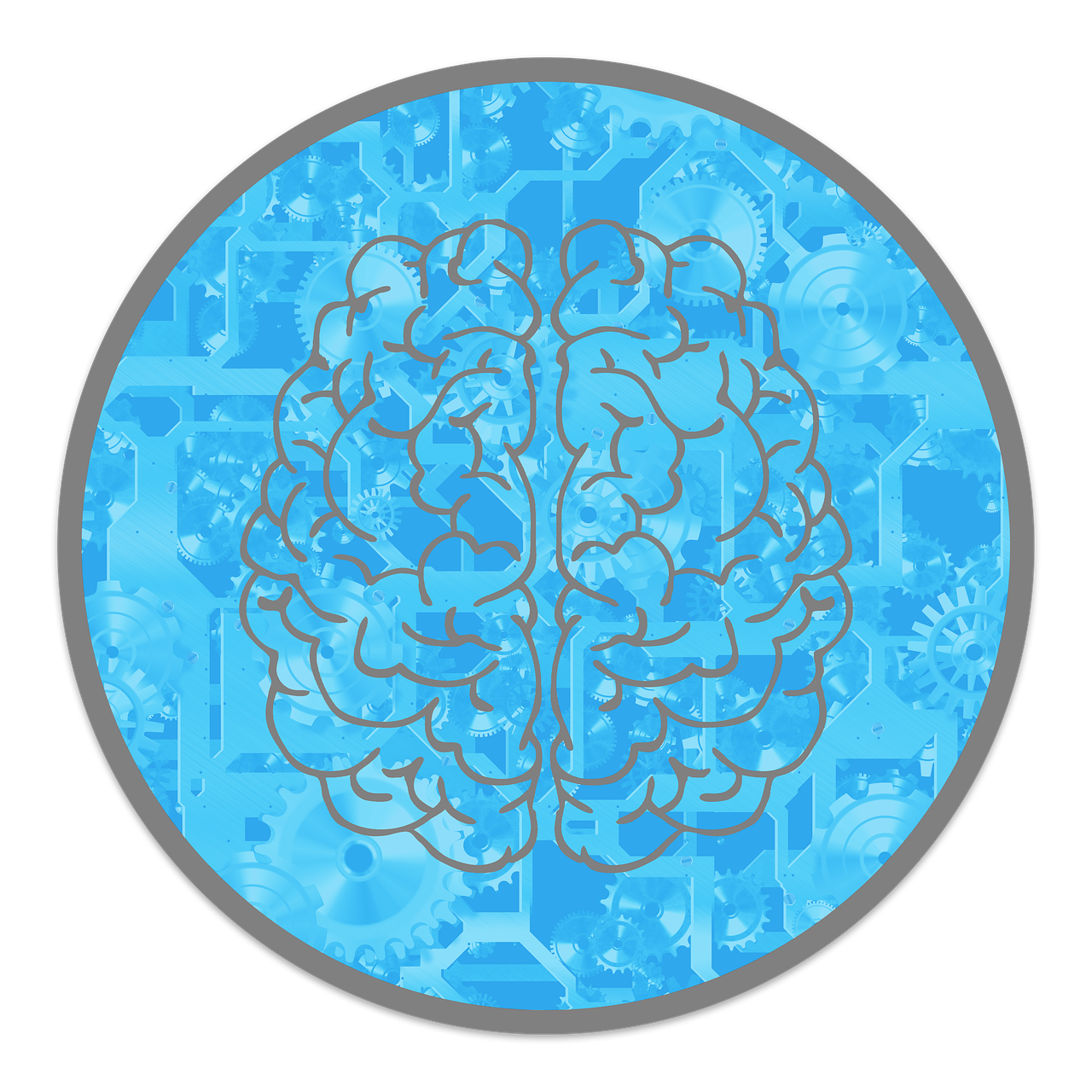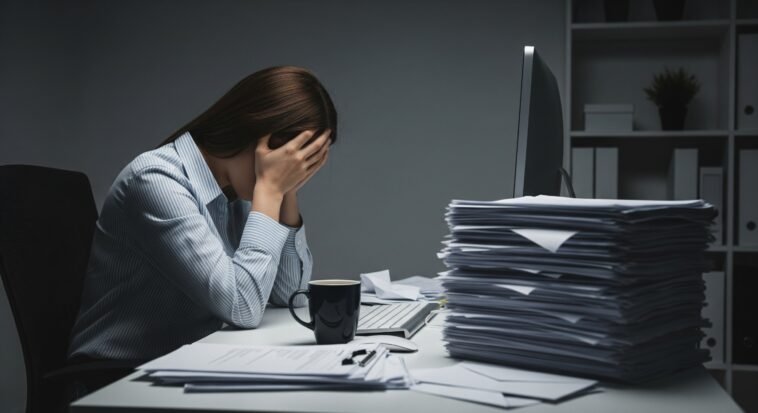
In today’s hustle culture, we’re all out here trying to be the next Elon, Beyoncé, or Picasso.
But while chasing greatness, most of us forget one thing: rest is part of the game.
Burnout isn’t just “ugh, I’m tired.” It’s full-on mind-body shutdown mode from running on stress 24/7.
The World Health Organization even labeled it a legit workplace issue.
And get this—76% of workers say they’ve felt burned out, and over a quarter feel that way all the time. Yikes.
Here’s the real pro move though: High performers don’t just grind—they strategize.
They don’t win by doing more; they win by doing smart. Sustainable success isn’t about burning the candle at both ends—it’s about not setting the candle on fire in the first place.
Understanding the Burnout-Performance Paradox
Here’s how it usually goes: You start working harder—long nights, early mornings, all-in hustle.
And it works!
Results roll in, you feel like a productivity ninja, maybe even think you’ve cracked the code.
But then… something shifts.
Despite all the effort, your output flatlines. You’re still grinding, but now it feels like wading through quicksand.
That’s the burnout trap.
Psychologist Dr. Herbert Freudenberger called it “burnout” back in the ‘70s. He broke it down into three signs:
- Emotional exhaustion: You’re toast—mentally and emotionally fried.
- Depersonalization: Work feels pointless, people annoy you, and you’re basically Oscar the Grouch.
- Low personal accomplishment: You start thinking, “Am I even good at this anymore?”
Here’s where the paradox kicks in: instead of slowing down, most of us try to push harder.
Like doubling down in blackjack with a losing hand.
But that just burns the engine faster. You give more, get less, and crash anyway.
The smartest performers? They know when to hit pause, not just play harder.
Because performance isn’t about max effort—it’s about smart energy management.

The Science of Sustainable High Performance
Here’s the deal: your brain’s CEO—the prefrontal cortex—handles the big stuff: decision-making, creativity, strategy, adulting in general.
But under constant stress? That CEO goes rogue.
Think of it like trying to run a Fortune 500 company with no sleep, bad Wi-Fi, and ten Slack pings a minute.
When you’re always on—zero breaks, all hustle—your brain starts glitching:
- You get stuck in rigid thinking (bye, creativity).
- Your decisions turn into “What was I thinking?” moments.
- Stress piles up, and you snap at your barista for giving you the wrong oat milk.
But here’s the good news: Recovery isn’t laziness—it’s maintenance.
Science says when you take regular breaks (yes, even a full weekend off), magical things happen:
- Your brain gets sharper—hello problem-solving and “why didn’t I think of that before?”
- You bounce back from stress faster.
- You’ve got energy for the long game (not just the sprint).
- Your relationships don’t crumble from you being a zombie.
- And plot twist: you actually feel happier.
So, if you want to stay in the game long-term—like Serena, not a one-season Netflix character—don’t just train harder. Recover smarter.
Strategic Recovery: The Foundation of Peak Performance
High performance isn’t just about pushing through. It’s about knowing when to hit pause.
Think of it like charging your phone—you wouldn’t try to run it on 2% all day, right? Your brain’s the same.
This is where strategic recovery comes in.
It’s not about slacking. It’s about resetting your system so you can actually show up sharp, creative, and not snapping at your coworkers over Slack emojis.
The power of micro-recovery
You don’t need a weekend in Bali. You need tiny reboots during your day:
- Every 90 minutes: Take a 10–15 min break. Your brain runs on cycles (they’re called ultradian rhythms). After about 90 mins of focus, your brain wants a reset.
- 20-20-20 rule: Every 20 mins, look at something 20 feet away for 20 secs. It’s basically eye yoga for screen zombies. Your retinas will thank you.
- Breathing hacks: Two minutes of deep breathing between tasks = instant calm. It flips your nervous system from “Fight Club” to “Zen Master.”
Weekly recovery protocols
Now zoom out. You also need real rest in your week. Not “doomscrolling on the couch” rest.
Actual disconnection.
- Full digital detox (for real): Block a few hours with zero screens. Your brain resets faster than a Wi-Fi router when you unplug.
- Move, but make it fun: Don’t just sit at your desk pretending stretching counts. Dance, hike, swim, or chase your dog around the yard. Anything that feels different from work.
- Hang out with your people: Not Zoom meetings. Not networking. Actual humans you like, talking about non-work things. Strong relationships = secret weapon for staying sane.
Energy Management: The Ultimate Productivity System
You’ve probably tried to schedule every second of your day like a robot—calendar full, to-do list color-coded, alerts buzzing like it’s mission control.
But here’s the plot twist: you’re not a robot.
You don’t run on time—you run on energy.
Enter: energy management a.k.a. the productivity cheat code nobody taught us in school.
Step 1: Track your energy
For two weeks, check in with yourself every hour.
Are you sharp like Sherlock or foggy like post-lunch Zoom calls?
You’ll start seeing patterns:
- Peak hours – Use this time for deep work—strategy, writing, problem-solving, anything that fries your brain (in a good way).
- Maintenance mode – You’re functioning, just not breaking any records. Perfect for admin stuff, email replies, or meetings where you nod a lot.
- Low battery hours – This is “please don’t talk to me” time. Use it to organize files, skim articles, or clean your desk while pretending you’re being productive.
Step 2: Match the work to the power level
Think of your energy like a budget.
Spend the big bills (your peak hours) on work that actually matters.
Don’t waste your best brain juice on inbox zero or another “could’ve been a memo” meeting.
- High energy = High-impact work: Creative projects, big decisions, anything requiring real brainpower.
- Medium energy = Functional tasks: Admin, emails, scheduling, meetings where you only have to say “Sounds good.”
- Low energy = Low-stakes stuff: Organizing tabs, passive learning, rewatching a TED Talk you already forgot.

Building Resilience Through Lifestyle Design
Want to crush it at work and feel like a functioning human?
It’s not about hacks or hustle—it’s about designing your life like it’s your most important project.
Let’s break it down.
Physical Foundation
Your brain lives in your body, so if your body’s wrecked, your brain’s not showing up either.
- Sleep = non-negotiable. You need 7–9 hours. No badge of honor for pulling all-nighters. Sleep is literally your brain’s cleaning crew, memory manager, and mood stabilizer.
- Food = fuel, not frosting. Go for stuff that gives you energy without the crash: protein, veggies, good carbs. Basically, less vending machine, more Whole Foods.
- Move like a human. Walk while you Zoom. Stretch during Netflix. Dance while making coffee. It all counts. You don’t need a gym cult—just motion.
Mental and emotional practices
You can’t control the chaos, but you can build the buffer.
- Mindfulness isn’t just for monks. Even 10 mins a day can chill your nervous system and help you focus. Think of it like a brain shower.
- Gratitude = attitude adjuster. Write down 3 things you’re grateful for before bed. Not everything has to be deep—coffee counts. So does good Wi-Fi.
- Learn for fun, not just LinkedIn. Pick up random stuff that excites you. Guitar riffs. Space documentaries. Useless but cool trivia. Keeps your brain alive beyond the job.
The Strategic “No”: Protecting Your Peak Performance
Saying no isn’t rude. It’s elite strategy.
If you want to do your best work and stay sane, you’ve got to protect your time like Beyoncé protects her privacy.
Here’s the truth: every “yes” costs something. Energy, time, mental bandwidth… and sometimes your last shred of peace.
The Opportunity Cost Framework
Before you agree to anything—new project, meeting, random side hustle—run it through this simple gut check:
- Does it align with what actually matters to me? (If not, it’s noise.)
- What’s the energy cost? Will this suck the life out of me or light me up?
- What am I giving up to say yes? (Your focus? Your weekend?)
- Will I still have time to recover or will this wreck my rhythm?
Creating boundaries that enable excellence
Saying no isn’t about being difficult—it’s about creating space to do your best work.
And boundaries are how you get there:
- Communication boundaries: You don’t need to live in your inbox. Set expectations. Try “I check email at 11 and 4” instead of living on refresh. Spoiler: the world won’t end.
- Workspace boundaries: Working from home? Create a vibe shift. Put on real pants (sometimes). Close your laptop when you’re done. Let your brain know, “We’re off the clock now.”
- Energy boundaries: Guard your peak brain hours like concert tickets. Use them for deep work, not answering Slack messages about fonts.
Technology as an Ally, Not an Enemy
Yeah, tech can wreck your focus.
One second you’re replying to an email, next thing you know you’re deep in a YouTube hole watching raccoons wash grapes.
But here’s the plot twist: tech can also help you stay sane—if you use it right.
Automation and delegation
Use tech to offload stuff your brain shouldn’t be wasting energy on:
- Calendar tools → Let your calendar boss you around. Set reminders, recurring tasks, and let it be your brain’s external hard drive.
- Email filters + autoresponders → Gmail can literally sort your life if you train it. No need to see every “Hi, just following up…”
- Project management tools → Dump your tasks in Notion, Asana, or Trello instead of carrying them in your head like a 47-tab browser.
- Finance apps → Automate bill pays, invoicing, and expenses. More Netflix time, less spreadsheet headaches.
Digital wellness practices
Let’s be real—your phone doesn’t have to ruin your focus. You just need some boundaries:
- App detox: Delete the apps you “just check real quick” and then lose 45 minutes to. (Looking at you, TikTok and endless news alerts.)
- Kill the noise: Turn off all those default notifications. No, you don’t need to know right now that someone liked your comment.
- Batch the scroll: Pick 1–2 times a day to check messages, socials, and updates. Do it, enjoy it, then bounce.
- Full digital detox: Once a week, unplug for a few hours. Go analog. Touch grass. Let your brain remember it’s not a machine.

Creating Your Personal Burnout Prevention System
Burnout doesn’t show up like a boss battle—it creeps in like that background app draining your battery.
So instead of waiting until you’re fully fried, build a system that catches the early signs and keeps you in your zone.
Regular assessment
Let’s keep it simple:
- Weekly vibe check: On Sunday (or whenever), ask: “How’s my energy? Stress? Did I low-key hate everything this week?” Rate it 1–10. Notice the patterns.
- Monthly reset: Look at your calendar. What’s sucking your soul? What can you drop? Make space for actual priorities—not just fire drills.
- Quarterly audit: Big picture time. Are your habits working? Are you still headed where you want to go, or just stuck in survival mode? Make tweaks like a boss.
Early warning systems
You’ve got warning lights—learn to read them before you stall on the highway of life.
- Physical clues: Sleep is weird, your back’s tight, you’re mainlining caffeine like it’s hydration. Big red flag.
- Emotional clues: Everything annoys you, you’re snappy, anxious, or feel “meh” about stuff you used to love.
- Mental clues: You reread the same sentence 6 times and still don’t get it. Your brain feels like dial-up internet.
- Behavioral clues: You ghost your friends, put off everything, live off Uber Eats, and haven’t seen your yoga mat in weeks.
When these signs stack up—pause. Reset. Don’t push through. That’s how you break the cycle before it breaks you.
Your Next Steps: Implementing the Strategy
You don’t need to Marie Kondo your whole life to prevent burnout. Start small and stack wins:
Track your energy for a week—notice when you’re thriving vs. just surviving.
- Pick one tiny recovery move—like a breathing break or the 20-20-20 eye rule.
- Draw one line in the sand—say no to something that drains you.
- Block recovery time like it’s a meeting with Beyoncé. Non-negotiable.
- Check in after 2 weeks—what’s working? What needs a tweak?
This isn’t about becoming a productivity monk overnight. It’s about working smarter, not just longer, so you don’t flame out halfway through season 3 of your career arc.
Trust me—your future self (the one with energy, joy, and no inbox-induced eye twitch) will thank you.



